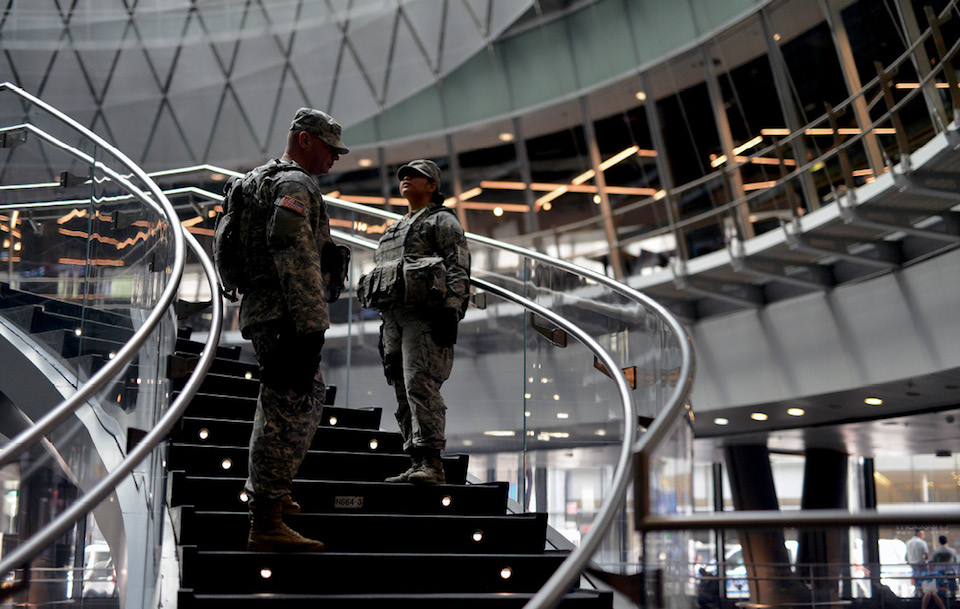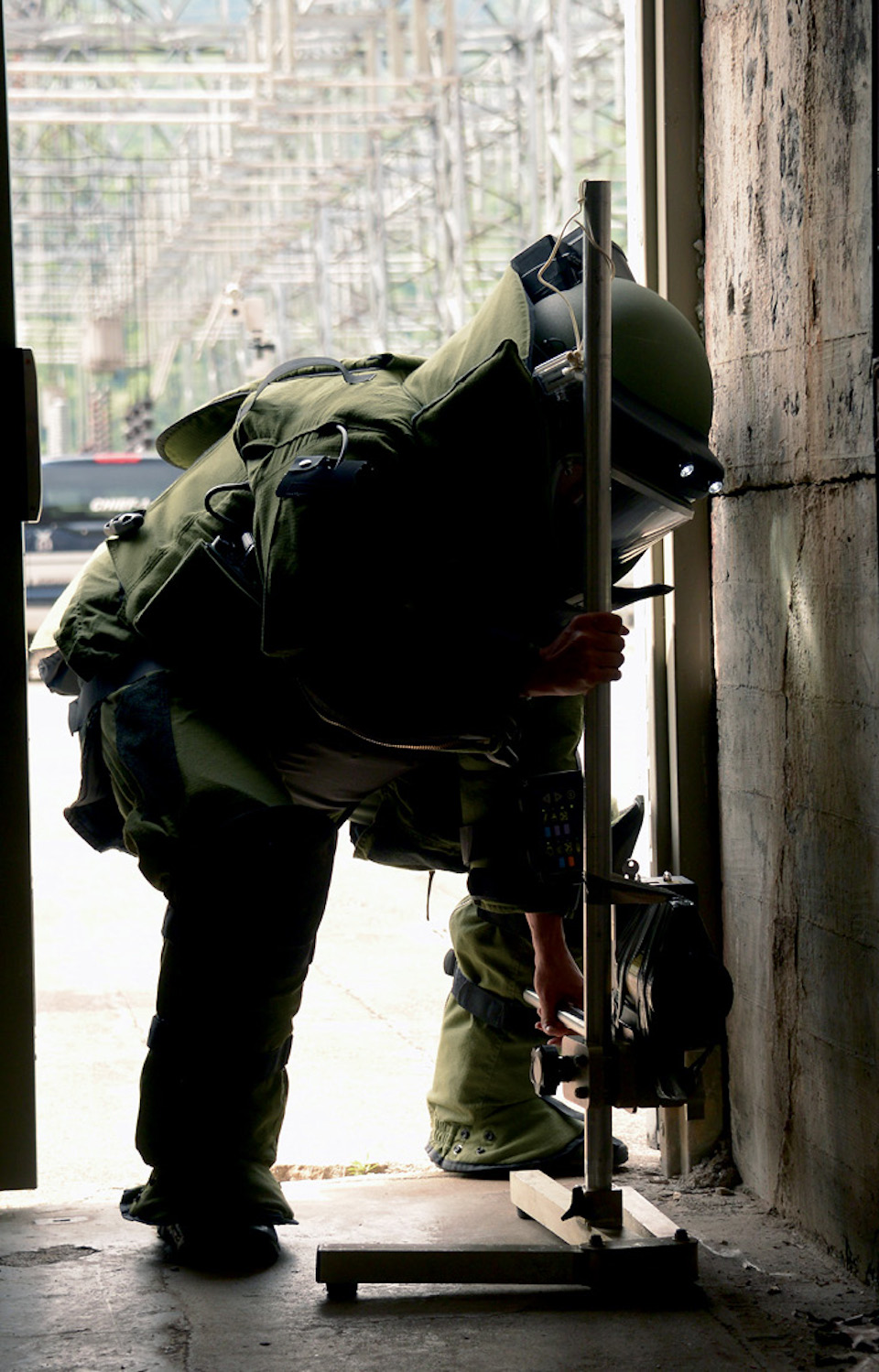Download PDF
Steve F. Kime was a Writer and Lecturer. His most recent book is An Officer’s Story: A Politico-Military Journey (AuthorHouse, 2015). He was the President of the Servicemembers Opportunity Colleges from 1989 to 2005. Mr. Kime passed away in October 2017.
We need to start thinking about a military doctrine that is appropriate to the realities the United States faces in the 21st century. This should prove to be a painful process because it will be forced by unpleasant realities and will involve changes to long-held and entrenched ideas about who we are and how we use military power to express U.S. concepts and values on domestic and international stages. It may take two or three decades to arrive at where we need to be, but we must start thinking about it now.
The United States emerged from World War II as a superpower with the doctrinal luxury of not having to come to grips with the limits of our military power for many decades. During that time, our open-ended approach to the construction and use of force has led the Nation astray and taught us some difficult lessons. Reality has begun to reveal the limits that we have been reluctant to recognize.

U.S. Air National Guard C-130J Hercules aircraft equipped with Modular Airborne Fire Fighting System drops line of fire retardant on Thomas Fire in hills above city of Santa Barbara, California, December 13, 2017 (U.S. Air National Guard/Nieko Carzis)
Realities
The new environment for nuclear strategy includes the erosion of intercontinental nuclear power, basic changes to past thinking about nuclear escalation, and increased possibilities for the use of force at all levels of conflict, nuclear and nonnuclear.
A communications and technical revolution has altered the entire context for international relations, including the spectrum of potential and actual conflict and the options for building appropriate forces for the kinds of conflict that are likely.
The luxury of separating foreign and domestic threats has ended, and the Nation faces a pressing need to rediscover the geopolitical facts of life. We have forgotten the “militia” focus of our ground forces, but a new awareness of domestic vulnerabilities, especially at our borders, is beginning to rekindle thinking about the core purpose of the Army.
An American concept of war has evolved that is deeply embedded in public opinion and unlikely to change. It accepts a “sledgehammer” approach to clear threats to the Nation but does not tolerate dabbling in unclear threats and incremental foreign military entanglements.1 Americans will support quick, decisive strikes on a clear enemy but will not support a lingering contest that descends into a quagmire that saps the economy and costs precious American lives. More contained applications of military force, done in coalition with other countries and with clearly understood goals, are more tolerable, but they have limited staying power.
The economic reality is that America, in its post-industrial phase, cannot afford to patrol the world as a policeman and, perhaps more important, cannot afford the kinds of extended conflict and maintenance of extended military presence abroad that we have supported in recent decades. This economic reality is accompanied by social and cultural change in the direction of softer power that has already had effect. The U.S. world police are no longer on the beat. Nation-building, exporting democracy, and stopping falling dominoes are already things of the past.
A politico-military reality is this: posturing forces and policies to do what we are not actually prepared to start and finish is dangerous and extremely expensive. The cost in loss of American credibility on the international stage is enormous. Our failures in Vietnam, Afghanistan, and Iraq will be in the calculations of our friends and enemies for decades. Claims that “we could have won” cannot be taken seriously, and continued posturing to be able to try it again is not credible to astute observers. Americans, informed by a 24-hour news cycle and twice burned by military overreach, realize that it is folly for a nation to confuse its friends, its enemies, and itself. It is insanity and hubris to think that, with leadership, policymakers can lead the population to conflict that would almost surely be unsustainable over the long term and add trillions of dollars to the national debt. The American people have been there and done that. They will not go back.

Department of Homeland Security delivers food and water to isolated Puerto Rico residents after Hurricane Maria destroyed infrastructure around Utuado, Puerto Rico, October 12, 2017 (U.S. Air Force/Joshua L. DeMotts)
A Word to Reality Deniers
Some will argue that the price is high and that unfriendly forces will fill any vacuum. Those who argue this are serious people with serious concerns that contain an element of truth and must not be dismissed.
There is no doubt that a reduced U.S. police role has left a vacuum. The price in a given region may indeed be high, the need for America to shore up its coalitions may be strong, and the necessity to endure regimes we loathe may be distasteful. The laudable American instinct to export our democratic values and great good fortune will suffer.
But accepting these realities is not the end of the world, just the end of a world we dominate every day in every way. Those who would dispute the effect of these realities and oppose attempts to modernize our doctrine to meet them might complain that they imply domestic policy isolationism and American foreign policy tentativeness. In making such an assertion, however, they would be wrong. A realistic, common sense military doctrine compatible with the will of the American people does not have to relinquish the U.S. leadership role in international affairs. There is plenty to do both at home and abroad.
There is some consolation, however: American example and measured military action will continue to count. Ronald Reagan’s “Shining City Upon a Hill” has been our most successful contribution to the future of democracy. How we handle our domestic structure and security, combined with a sober approach to threats abroad in careful coordination with like-minded allies, can be an effective approach to hard power.
The military force component of 21st-century U.S. posture must be a more focused one and a different one, but not a weak one. Domestically, security of the homeland is active, effective security. This U.S. foreign policy would result in a change in military doctrine, and it would be decidedly neither passive nor pacifist.
Where direct threats to national security are concerned, the military part of American policy would be about sledgehammers, not scalpels. Even smaller, more “surgical” actions would be done with overwhelming force. While our doctrine should not seek to use force, we need to deal with a timeless reality: the best way to avoid a fight at any level of conflict is to be able to decide the issue with force, if necessary. The most credible American projection force is not a spinoff of a world war–like force that can threaten to invade and occupy; it is a highly mobile power, appropriate to the situations where it is intended to be applied and visible to all, a force that can hit fast and hard, be done with it, and leave.
Where more subtle or indirect threats of force are involved, or where regional issues demand multinational presence, U.S. policy must lean heavily on diplomacy and international coalitions and steer clear of unilateral projections of military power. Every friendly world power knows that such coalitions work best with American leadership and with credible force to back it up. Friendly powers must be made aware that the United States will lead only if all actors carry their fair share of the political and military burden. U.S. politicians must understand and support a vigorous foreign service totally in tune with our doctrine.
The response to those who would still insist that America must continue to be the world police is not satisfying, but it is clear. The Nation must:
- support an active, forward diplomacy backed up with visible and limited but capable military presence.
- be prepared to live with less-than-satisfying outcomes, unpleasant partners, and ugly opponents.
- accept that building nations abroad in our own image is a chimera that has been exposed. If the American way is to be imitated abroad, it will be because it is admired, not because it is cajoled, bought, or sold. Trillions of dollars and thousands of lives have been wasted in feckless efforts to export our unique way of life, and the American people are fed up with it.
- understand that the Shining City Upon a Hill needs to shore up its domestic security and viability. This should be seen as an international reality and not as isolationism.
Doctrinal Priorities and Directions
A realistic military doctrine requires a basic reordering of resources dedicated to our military posture. Significant resources will continue to be needed for limited but decisive projection forces and for beefed-up and reorganized domestic security forces. Doctrinal priorities must be shifted in these directions and away from maintaining ground forces capable of deploying thousands of miles away and dominating distant battlefields for long periods of time.
Military budgets may suffer as the Nation, adjusting to the post-industrial and changing global economic power balances, finds that it cannot maintain a defense budget larger than several other major countries combined. It is essential that our economic and political decisionmakers think decades ahead about the role of the United States as they adjust doctrine, defense budgets, and postures. There will probably be enough resources for a thoughtful future military, but not enough to keep rebuilding the past.
Debates over inculcation of high technology and size of forces will tend to be settled in favor of the former as realities weigh in. Such debates will influence forces in varying ways.
We face intense debates between technological development of naval power and the need for numbers of ships to bolster maritime presence. Runaway costs and the state of the economy aggravate the tension between technology and numbers of ships. We must seek balance here and not fail to see where the future will take the Navy. We need to keep an eye both to the need for presence abroad and the requirement for a modern Navy clearly second to none. We are, in spite of the great changes that modern technology introduced into geopolitics and space, a maritime nation. The Navy’s role in a refocused U.S. military doctrine is crucial. If the sledgehammer is needed, the Navy and quick-strike elite forces will deliver the key blows. In some regional situations where U.S. interests are clearly threatened enough to warrant congressional approval to act, such forces will deliver the fastest, surest strikes with the most visible effect. If U.S. support of a combined international projection of force is required by a determined coalition and supported by Congress, the whole world would expect the crucial element to be U.S. maritime power.
Maritime visibility and presence with unequaled strike capacity that fits the refocused doctrine are key. This means having enough carrier strike force to be the sledgehammer if needed for rapid, limited, independent U.S. action or the core of a joint international operation of larger scope, if appropriate. This means increased resources for this facet of American military power because it is most likely to be brought to bear and most likely to deter potential adversaries in the first place. This also means attention to the changing technical facets of limited warfare, such as antiaccess/area-denial challenges to projection forces.
We must tailor our forces for what we are actually prepared to do: smash a clearly identified and targeted enemy with overwhelming force in short order or provide standoff support of a somewhat longer commitment by an international coalition in which U.S. Marines are involved. At the same time, we must be careful not to get drawn into fantasies about “war at sea.” Naval forces can deter and, if necessary, determine the outcome of localized conflicts, but major conflict in this century is not likely to be settled at sea. Even a clash at sea with China, a prospect that will continue to require deployed forces in Asia, may be deterred there and even may start there, but would not end there. This is not good news for those who have tailored their doctrinal thinking in terms of war-winning and world war scenarios. Nor is it good news for those who, in spite of their denials, see limited wars as spinoffs or subsets of the great wars of the past that require massive military outlays to prepare for extended major conflict.
The truth is that conflict between major powers, short of Armageddon, is extended political, economic, and military competition without the territorial implications of the past. Superpower military status focuses this long-term major power competition but does not necessarily determine outcomes. Especially regarding competition with China, U.S. doctrine must see decades ahead and integrate political, social, and economic factors with military ones. Limited, carefully tailored projection forces, combined with strategic intercontinental ones aimed at the long haul, are key in this vision.
Force Implications
The implications for nonprojection U.S. forces are profound. Realities require an American force structure different from what we were used to maintaining in the second half of the 20th century. Given the realities that have emerged, resources must be shifted to match the will of the people to use force, the contingencies in which force makes sense, and the resources that can realistically be devoted to the military.
No nation is better positioned geographically and economically to defend itself. Reagan was correct: the Shining City Upon the Hill is what America is really about and how we can best be the model for the world. Our very existence is the best answer to those who choose not to be like us. This is what American exceptionalism really means. Protecting the Shining City is what our Army should be about.
In spite of the considerable innovation that has taken place in military affairs, our basic doctrinal outlook has not changed much, especially regarding ground warfare. Two world wars distorted the nature of the Army, and it is time to get back to a basic fact: we are a Reserve and National Guard nation. The purpose of the Army is to defend the homeland. The posture, operations, and deployment of our Army should be aimed at our borders and our internal security.

Members of Joint Task Force Empire Shield ramp up operations at Fulton Street Subway Station on September 21, 2016, following bombings in Manhattan and New Jersey (U.S. Air National Guard/Christopher S. Muncy)
The Army should maintain the armed core of fighters and trainers who might be needed if it is ever necessary to call on the states and the people to provide a massive force. It is not the function of the Army to maintain forces for “boots on the ground” in foreign interventions. Maintaining the force for “the well-regulated militia necessary to the security of a free State” is the Army’s basic responsibility, supported by the states.
Because the changes required are fundamental, it would be naïve to think they could happen without heated resistance and debate, but it is time for America to come to grips with the fact that it is the U.S.-Mexico border, not the North Korea–South Korea border, that we must guard. For half a century, we have not even tried to correct the Korean abnormality as we harbored the illusion that world war postures were normal for America. Reality contradicts such illusions.
If America ever has to put troops on the ground in massive numbers, it will require all of us to weigh in, not just a few volunteers. The volunteer Army must evolve more highly integrated training and posture relationships among Reserve, Guard, and Active units. The Selective Service needs to be serious about the reality, though remote, of mobilization, and it must adjust to the gender revolution.
The requirement to deploy U.S. forces on the ground, short of a need to mobilize a mass Army, has changed but not disappeared. We have always needed an elite force that can be decisive in necessary and small uses of force. The Marine Corps is the core ground element of U.S. projection forces. The Marine Corps may be judged to be at about the right size to be capable of the kind of robust, decisive action it can be called on to do, but adjustments for coalition warfare and more modern deployment techniques are in order. America only needs one Marine Corps. Some sacred organizational and cultural oxen should be gored: “Elite” forces in the Army and Navy should be transferred to the Marine Corps where they properly belong in a 21st-century military doctrine.
Airpower needs rethinking. It will continue to be important both as a strategic hammer in the triad and as a precision instrument in coalition warfare. U.S.-based Air Force assets will be relevant throughout the spectrum of conflict. The size of the forces can be reduced, but their quality must be enhanced to fit a realistic idea of how and when projections of airpower will actually be needed in addition to beefed-up aircraft carrier deployments. The debate between advocates of new technology and proponents of numbers of aircraft must tilt, unlike the case with Navy construction, clearly toward technology. Foreign-based Air Force fighter capabilities would be deemphasized and might not fit at all into refocused U.S. doctrine.
Our strategic deterrent in submarines will be a vital element of American military doctrine for the foreseeable future, but we must come to grips with the economic costs and the changed nature and relevance of nuclear intercontinental deterrence. Fewer ballistic missile submarines can do the job. Similarly, the attack submarine force must adjust to new realities. We must keep pace with the strategic submarine threat from China and Russia, and some submarine support of Navy projection forces is needed, but the nuclear submarine force must focus on quality rather than quantity. Thus, some serious consideration of cheaper, nonnuclear submarines in presence and support missions is in order.
Presence requires more than aircraft carriers. Numbers of ships and the ability to keep large numbers deployed without ruining ships and destroying morale with unreasonable operations tempo are all important. A shift to a maritime-oriented forward military presence in a new approach to U.S. military doctrine must recognize that resources must be devoted to the presence mission. Numbers count.
We have the core of a maritime defense force, but new realities require shifts in focus and orientation. The Coast Guard needs refocusing and probably some buildup to cope with 21st-century realities. Increased “militarization” of the Coast Guard is probably needed. We must reject the schizophrenic notion that the Coast Guard is not really a military force. More Navy–Coast Guard integration is needed, and tighter coordination between a revamped Army and Coast Guard is in order.
Nuclear forces must be updated to reflect a second nuclear age increasingly different from the old “balance of terror” days. This need is far too complex to explain in detail here, but some likely changes are a modified triad with fewer intercontinental strategic weapons, updated, and with concentration on the most invulnerable weaponry. We also need a new focus on highly mobile, tactical, nuclear weaponry that would be credible in both deterrence and warfighting in an environment where uses, and threats of use, of nuclear weapons at lower nuclear levels of escalation are increasingly more likely. We must guard against surprise at the tactical nuclear level.
As the full implications of the need to integrate internal defense with foreign projections of force in our thinking become clear, a serious, refocused military doctrine will cause some badly needed reconfiguration between the Departments of Defense and Homeland Security. It may be that the evolution and growth of major institutions—the National Security Agency’s internal role and functions of Homeland Security, for instance—were mistaken. They must be rethought in terms of a serious military doctrine. We may find that, as in 1947, a comprehensive new approach to national security organization is needed to execute a new doctrine. It is also time to correct the legal relationships between “domestic” and “foreign” armed forces that have become skewed over time. The entire body of law regarding the Posse Comitatus Act needs thorough review and revision in light of the reality that domestic and foreign military functions can no longer be cleanly separated.
A Realistic Timeline

Detective with Asheville Police Department Bomb Squad places X-ray detection device in simulated hazardous area during regional domestic operations and homeland security/defense exercise Operation Vigilant Catamount, at Fontana Dam, North Carolina, June 12, 2017 (National Guard/Wayne Becton)
Clearly, the context for the exercise of American leadership has changed. Also changed is the relationship of nuclear and conventional forces at all levels of conflict, the technical and communications environments, and the interplay between domestic and foreign military challenges. It is a changed world both at home and abroad. New realities demand new approaches to the missions, construction, and operation of U.S. military forces.
Political realism is, of course, at odds with these stark realities. Perceptive leaders and military innovators see and grasp the realities, but it is unrealistic to hope that America will adjust quickly to them. Despite the growing awareness that our current military posture is out of sync with the times, no politician and no military officer could successfully confront the powerful array of vested interests in the status quo and suggest the kind of military revolution that reality requires.
The realities themselves will have to weigh in, and eventually they will. We may approach mid-century before they do. It may not yet be clear enough that politico-economic decisionmakers must deal with it, but we are on the cusp of the day when reality will force a revolution in military doctrine. The doctrine suggested here constitutes a revolution, and revolutions take time. The arc of change might be irregular because revolutions can happen incrementally and by fits and starts. Let there be no illusions about how difficult this revolution will be, but let us not fail to see the curve and get ahead of it. JFQ
Note
1 Steve F. Kime, “Return to the American Way of War,” U.S. Naval Institute Proceedings 137, no. 5 (May 2011).